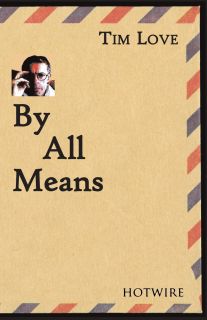In Neil Ferguson's letter in "The Rialto 55" he writes that the previous issue's poems "share common assumption about how poems are made ... not one ventures into rhyme ... [they] eschew formal techniques ... [they use] more or less random end stop ... all the poems cohere around a restrictive idea about what a poem is - informal/unformal, confessional, easy to read, smart ... [demonstrate the] demise of the metaphor".
While reading it I was drafting a reply not realising that Fiona Moore's much-welcomed reply followed. I'll put my reply here, then mention Fiona's.
Uniformity
From the outside, a genre or school's common feature can seem dominating or oppressive - disco's all THUMP-THUMP-THUMP; classical music's all Diddledum-diddledum-diddleDEE-diddledum. Fashion in clothes goes through fads too, some of them more pervasive than others (we don't all have to wear demin jeans nowadays).
Unsurprizingly, poetry has its fads, and magazines have their preferences. Poets move with the times, both influenced by and reacting against their surroundings. If they isolate themselves from the present (writing a poem that sounds like Hiawatha, for example), they should expect to be accused of pastiche, or of wearing fancy-dress. If the poets believe in poetry as communication, then they should also accept that reception of a message is influenced by the context that readers inhabit. If poets isolates themselves from the context that their readers inhabit, they may be misunderstood. Working initially within that context, a lucky poet might extend the prevailing range, reviving and remixing styles, but I think that's more the exception than the rule.
Text books lag behind poetry trends. I found John Redmond's text-book "How to write a poem" interesting because it focussed on different elements to those that older primers featured. Perhaps because I read too many old text books and I'm outside the school/genre in question, I sometimes think I detect similarities in a body of work -
- "The Best British Poetry 2011" had no LangPo, no minimalism, though the final poem's a mash-up. There's little narrative. Stephen Burt in his "Close Calls with Nonsense" writes "In pursuing certain virtues - colorful local effects, personae and personality, juxtaposition, close calls with nonsense, uncertainty, critiques of ordinary language - the current crop of American poets necessarily give up on others. I miss, in most contemporary poetry, the arguments, the extended rhetorical passages and essayistic digressions I enjoy in the poems of the 17th and 18th centuries". In BBP 2011 I rather missed those features too.
- The "Next Generation poets, 2005" had (individually and collectively, I thought) a narrow range, the main core being from anecdotal lyric to mute-Martian lyric, written in broken prose. I also thought there was non-intellectualism, form/word blindness, and a narrow range of imagery - computers, mobile phones, games shows and cheap flights barely figured, and War, Politics or World Affairs weren't alluded to let alone addressed.
Rialto's reply
I've often bemoaned the lack of explanations of poems, especially articles for people wary of modern poetry. If poets make no effort to explain their poems they shouldn't grumble about low sales of their books. I think Ruth Padel's "52 ways of looking at a poem" and "The Poem and the Journey" provide a useful service. For many years "The North" has had a "Blind Criticism" section where 2 writers comment on a poem without knowing who write it. In "Smiths Knoll" editors sometimes wrote about a particular poem from the issue. More recently, prac crit has appeared. They all help.
It's refreshing to see [sub]editors engaging with readers. Fiona Moore points out in her reply that
- Especially regarding rigorous forms, magazines can only print what they're sent
- Technical constraints make writers work harder, avoiding obvious paths
- Rhyme is less regular and full than it used to be
- Metaphor is perhaps less obtrusive than hitherto
She ends by saying that she'd like more about "politics, climate change, space and science".
Re the first point, there's obviously a chicken-and-egg issue, but I've never thought of Rialto as an anti-Formulist publication. I feel sometimes that the cliches and deadwood of free-form (gratuitous line-breaks, say) are more tolerated than gratuitous end-rhyme, but that's the fashion.
I'm less enthusiastic about constraints than she seems to be, but my guess is that we differ in our attitude to half-hearted constraints - I'm less tolerant, seeing less value in them.
I agree that sound-effects are less line-based nowadays, with more emphasis on 2-D arrangement and clusters. Padel's books often point these out.
 4 issues of
4 issues of  My story collection "By All Means" (ISBN 978-0-9570984-9-7), published by Nine Arches Press, is on sale from
My story collection "By All Means" (ISBN 978-0-9570984-9-7), published by Nine Arches Press, is on sale from  My poetry pamphlet "Moving Parts" (ISBN 978-1-905939-59-6) is out now, on sale at the
My poetry pamphlet "Moving Parts" (ISBN 978-1-905939-59-6) is out now, on sale at the 